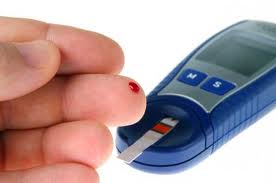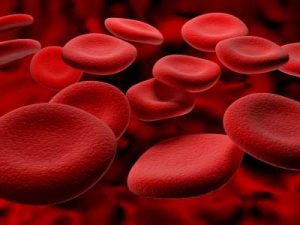What Is Considered High Blood Sugar?
For diabetics, knowing what is considered high blood sugar and what is not, can be a real lifesaver.
The body naturally has glucose in the blood which gives the organs and cells energy to function. Blood sugar mainly comes from carbohydrates and the body needs insulin in order to maintain blood glucose levels within the normal range. Insulin helps cells absorb glucose from the blood and use it for energy or store it.

In this article, we’ll explore what high blood sugar (hyperglycemia) feels like, why it happens and how you know if you have hyperglycemia.
So what is considered high blood sugar?
Anything over 120 mg/dl is what is considered high blood sugar and once blood sugar levels reach 140 mg/dl they begin to damage the body. There are several things you can do to help control your blood sugar. The first is to talk to your doctor. Use a blood glucose meter, these help by allowing you to check your blood sugar at any time.
What are the Symptoms of High Blood Sugar?
- Headache and other pains and aches
- Fatigue
- Difficulty concentrating
- Feeling tired or drowsy
- Blurred vision
- Dry mouth
- Frequent urination
- Slow healing of cuts, wounds, and bruises
- Bloating
Low insulin and high blood sugar can lead to a build-up of ketones, or even lead to DKA (diabetic ketoacidosis), a complication that required immediate medical attention.
If this happens, you may experience:
- A rapid heartbeat
- Fruity smell or taste
- Disorientation
- Confusion
- Shortness of breath
- Dehydration
- Vomiting
- Coma
Moreover, your blood sugar level may be over 250 ml/dL. Most people with diabetes typically experience the symptoms of hyperglycemia (high blood sugar) in the morning.
Effects of high blood sugar on the body.
High blood sugar can cause a wide range of symptoms. Here are some that you need to be aware of:
- Thirst and frequent urination: Excess sugar in the blood goes into the kidneys and the system works to get rid of it through the urine, causing frequent urination and increased thirst. People with high blood sugar tend to experience increased thirst, despite drinking the recommended amount of liquids.
- Tingling and numbness: High blood sugar levels can also cause tingling, burning, or numbness in the feet, legs, and hands. This can be caused by diabetic neuropathy, a condition that arises after many years of consistently high blood sugar levels.
- Weight loss: Unexplained or sudden weight loss can occur in people with high blood sugar levels because cells are not getting the nourishment (glucose) they need. As a result, the body burns stored fat and muscle for energy instead.
Can High Blood Sugar be Dangerous?
When insulin levels are too low the sugar levels begin to rise and this can damage the body. The damage often associated with high blood sugar is heart damage, nerve damage, eye damage, and kidney damage. This kind of damage will impair diabetes later on in life so it is best to control your blood sugar.
Causes of High Blood Sugar
High blood sugar can be caused by various conditions, including:
- Gestational diabetes occurs when high blood sugar levels and insulin resistance appear during pregnancy. If this happens, the mother should be closely monitored as high blood sugar levels during pregnancy can lead to various complications for the baby and the mother as well.
- Type 1 diabetes is where the immune system launches an attack on insulin-producing cells in the pancreas. As a result, insulin production is reduced or stopped and blood glucose levels rise. People diagnosed with type 1 diabetes regulate their blood sugar level by taking insulin through a pen, insulin pump, or needle. According to the American Diabetes Association, only 5% of people with diabetes have type 1 Diabetes.
- Type 2 diabetes is where the pancreas produces insulin but the body does not use it properly. In this case, the body is unable to use insulin to keep blood glucose levels steady (insulin resistance). If you have type 2 diabetes, you may need to make exercise or diet changes or take pills or insulin to help manage your blood sugar levels.
- Cystic fibrosis: Studies suggest there may be a link between cystic fibrosis and diabetes
- Medications: Certain steroids and beta-blockers can raise blood sugar levels.
Long-term complications of high blood sugar.
Consistently high blood sugar levels can damage the body’s systems and organs. This can lead to serious complications such as:
- Kidney disease
- Stroke
- Heart attack
- Damage to the eyes and loss of vision
- Nerve damage leads to infections, sores, and wound healing problems
Risk factors
- Type 1 Diabetes
Although researchers have not yet established exactly what causes high blood sugar levels and diabetes, there are certain factors that increase the risk.
According to the National Institute of Diabetes and Digestive and Kidney Diseases, certain genes have been shown to have an impact. Moreover, infections and viruses may play a role. Studies also show that certain environmental or genetic factors may increase the risk of getting type 1 diabetes.
You can be diagnosed with type 1 diabetes at any age, but it usually starts during early adulthood or childhood.
- Type 2 Diabetes
Risk factors that increase the likelihood of developing type 2 diabetes include:
- Sedentary lifestyle
- Being overweight
- Having certain genes
- Being over 45 years old
- Having a sibling or parent with type 2 diabetes
- Having American Indian, African-American, Pacific Islander, Alaska Native, Hispanic, or Asian-American ethnicity.
- Having high blood pressure or receiving treatment for it
- Having high levels of triglycerides or low levels of HDL cholesterol.
 Focus on eating the correct diet for diabetics.
Focus on eating the correct diet for diabetics.
The correct diet for a diabetic is low sugar items and items with high dietary fiber. This should be discussed with your doctor as he can give you the best information.
Avoid foods that are high in fat and refrain from consuming alcohol, because alcohol stays in the bloodstream and its action mimics that of blood sugar. You’re going to need to cut down on the salt intake as well.
American Diabetes Association Diet Plan Food Recommendation
The following foods are considered to be most helpful for diabetics:
- All kinds of beans – green and black beans, pinto beans, and navy beans. Beans are full of protein and energy. One-half cup of beans contains equal protein to that in an ounce of meat.
- Berries – raspberries, blueberries, and strawberries are full of antioxidants, vitamins, and fibers.
- Whole grains – avoid flours that are processed too much (pretty much all white flour falls into this overly-processed category) and instead go for the less processed forms like whole wheat and whole-grain options.
Tomatoes are good antioxidants and are very versatile since you can simply eat them as they are, peel or slice them, and even add them as toppings to your food. These are rich in iron, Vitamin C and E, and are good for your heart as well.
The bottom-line.
Monitoring your blood sugar levels alongside exercise and diet can help you maintain healthy blood sugar levels. Other strategies that can help prevent high blood sugar (hyperglycemia) include:
- taking the amount of insulin prescribed by your doctor if you have type 1 diabetes,
- planning your exercise routine and food intake,
- taking precautions to avoid infections,
- minimizing stress by getting enough sleep
- including other stress-reducing activities like yoga and meditation in your daily life.
Read about more of the complications that come with diabetes here!









